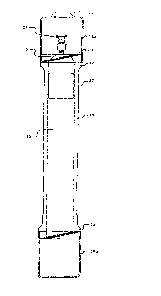Some of the information on this Web page has been provided by external sources. The Government of Canada is not responsible for the accuracy, reliability or currency of the information supplied by external sources. Users wishing to rely upon this information should consult directly with the source of the information. Content provided by external sources is not subject to official languages, privacy and accessibility requirements.
Any discrepancies in the text and image of the Claims and Abstract are due to differing posting times. Text of the Claims and Abstract are posted:
| (12) Patent: | (11) CA 1321155 |
|---|---|
| (21) Application Number: | 1321155 |
| (54) English Title: | PROTECTIVE APPARATUS FOR COMPRESSED GAS CYLINDERS |
| (54) French Title: | APPAREIL DE PROTECTION DE BOUTEILLE DE GAZ COMPRIME |
| Status: | Term Expired - Post Grant |
| (51) International Patent Classification (IPC): |
|
|---|---|
| (72) Inventors : |
|
| (73) Owners : |
|
| (71) Applicants : |
|
| (74) Agent: | BORDEN LADNER GERVAIS LLP |
| (74) Associate agent: | |
| (45) Issued: | 1993-08-10 |
| (22) Filed Date: | 1989-01-19 |
| Availability of licence: | N/A |
| Dedicated to the Public: | N/A |
| (25) Language of filing: | English |
| Patent Cooperation Treaty (PCT): | No |
|---|
| (30) Application Priority Data: | None |
|---|
ABSTRACT OF THE INVENTION
A protective apparatus for compressed gas cylinders which preferably
includes a molded thermoplastic cylindrical sleeve having a raised shoulder
region on its two ends. Each shoulder region of the sleeve is provided with
an external thread for engaging a closure cap. The closure caps are likewise
molded thermoplastic cylinders having one end wall and thread engaging means
on the internal circumference of their open ends. The top closure cap is
preferably provided with a carrying handle. One end of the cylindrical sleeve
is provided with an end wall having an opening which permits the passage of a
compressed gas cylinder valve but inhibits the passage of a compressed gas
cylinder.
Note: Claims are shown in the official language in which they were submitted.
Note: Descriptions are shown in the official language in which they were submitted.

2024-08-01:As part of the Next Generation Patents (NGP) transition, the Canadian Patents Database (CPD) now contains a more detailed Event History, which replicates the Event Log of our new back-office solution.
Please note that "Inactive:" events refers to events no longer in use in our new back-office solution.
For a clearer understanding of the status of the application/patent presented on this page, the site Disclaimer , as well as the definitions for Patent , Event History , Maintenance Fee and Payment History should be consulted.
| Description | Date |
|---|---|
| Inactive: Expired (old Act Patent) latest possible expiry date | 2010-08-10 |
| Inactive: IPC from MCD | 2006-03-11 |
| Inactive: IPC from MCD | 2006-03-11 |
| Grant by Issuance | 1993-08-10 |
| Small Entity Declaration Determined Compliant | 1993-05-10 |
There is no abandonment history.
| Fee Type | Anniversary Year | Due Date | Paid Date |
|---|---|---|---|
| MF (category 1, 4th anniv.) - small | 1997-08-11 | 1997-06-05 | |
| MF (category 1, 5th anniv.) - small | 1998-08-10 | 1998-08-07 | |
| MF (category 1, 6th anniv.) - small | 1999-08-10 | 1999-08-10 | |
| MF (category 1, 7th anniv.) - small | 2000-08-10 | 2000-08-10 | |
| MF (category 1, 8th anniv.) - small | 2001-08-10 | 2001-07-12 | |
| MF (category 1, 9th anniv.) - small | 2002-08-12 | 2002-08-09 | |
| MF (category 1, 10th anniv.) - small | 2003-08-11 | 2003-04-24 | |
| MF (category 1, 11th anniv.) - small | 2004-08-10 | 2004-08-09 | |
| MF (category 1, 12th anniv.) - small | 2005-08-10 | 2005-08-09 | |
| MF (category 1, 13th anniv.) - small | 2006-08-10 | 2006-08-03 | |
| MF (category 1, 14th anniv.) - small | 2007-08-10 | 2007-08-10 | |
| MF (category 1, 15th anniv.) - standard | 2008-08-11 | 2008-08-07 | |
| MF (category 1, 16th anniv.) - standard | 2009-08-10 | 2009-07-03 |
Note: Records showing the ownership history in alphabetical order.
| Current Owners on Record |
|---|
| J.F. WREN SALES LTD. |
| Past Owners on Record |
|---|
| JOHN FRANCIS WREN |